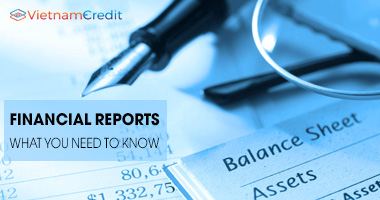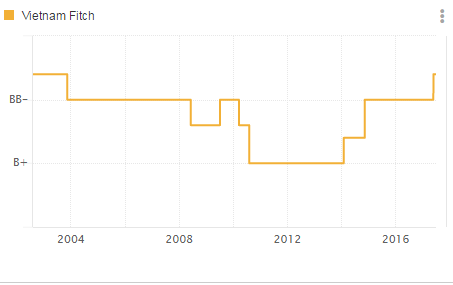Financial statements is an official and legal record of the financial activities of a business. This important and useful document helps managers evaluate financial performance, shareholders assess risks and return on investment, ...
Financial statements (FS) is an official and legal record of the financial activities of a business. This important and useful document helps managers evaluate financial performance, shareholders assess risks and return on investment, investors evaluate investment opportunities and forecasts, credit institutions determine credit limit, creditors assess the creditworthiness of a business, … to make business decisions in the most accurate and effective way.
Analysts give analysis based on data provided in the financial statements, which includes in: Balance Sheet, Cash Flow, Profit and Loss Account, and Interpretation on FS. In financial statement, figures and tables are clearly displayed and well arranged, however, it calls for vast financial and economic knowledge to understand financial statements.
With more than 20 years of experience in providing business information, VietnamCredit has generated more than 600,000 company reports which include the same number of financial statements. In addition, we have also established relations with many clients who are analysts, policymakers, investors, banks and credit institutions. VietnamCredit is eager to share with you some useful tips to read a financial statements effectively to get to the point.
Let’s get started by erasing all those financial and accounting theories out of your mind!
1. Know what you need to read in the FS
Suppose you are in need of more financial information than what is acquired from articles. Annual financial statements of public companies carry a lot of information including: a letter from the Managing Director, highlights, run charts, financial statements, extensive annotations for financial statements, historical overview, and are of “poser”. On the contrary, financial statements of most private enterprises are a lot shorter and simply what they are supposed to be with footnotes.
You may read the main points and go with the flow. You should also read the letter from the Managing Director sent to the shareholders. It is the summary of business developments in the letter that is worth reading. However, be cautious that such letters from the executives are often about how good they are and if the the expected results are not met, they are of course faultless. Keep reading but keep your mind sharp.
Many public companies release a shortened version of annual financial report. This version is scaled-down and simplified, which is enough for average stock investors to use. They are not for serious investors and professional investment managers. Investors and money managers need full financial statements.
2. Broaden your knowledge on accounting
The income statement, balance sheet and cash flow statement are the core of a financial report. To better understand financial statements, it requires at least a basic knowledge of finance and accounting.
You do not need to be an accountant but those who prepare the financial statements automatically assume that you are versed in accounting terms and the nature of the FS. If you know nothing about accounting, financial statements will be a Sodoku quiz. There is no way, in actuality, for those who want to read a financial statements but are accounting illiterate to understand it. After all, accounting is business language.
3. Assess profit performance
A business earns profits by selling goods and keeping the expense lower than the sales, therefore, the best point to get down to analyzing profit performance is not the bottom line but the first line: sales revenue.
- How is the sales revenue in the most recent year compared to the previous year?
- What is the gross margin of the business?
- Based on the information provided in the most recent income statement, how can you compare gross margin and profit with revenue?
One last thing: Put the business profit performance in the general economic situation.
4. Comparing Earning Per Share with changes in the bottom line (net income)
As you know, public companies normally report net income in the income statements and EPS is also reported there, right below the total profit in the period. In other words, ESP is the BOTTOM LINE of the income statement of a public company.
Private businesses do not have to report EPS, however, it is quite easy to calculate EPS of a private business: Divide its net income by the number of shares held by the equity investors in the company. Market value of a public company’s share depends greatly on EPS. Obviously, individual investors pay their attention to EPS, which is the driver of what they invest. The book value per share of a private company is the closest proxy you have to the market price of its equity. The higher the EPS, the higher the market value of a public company. And the higher the EPS, the higher the book value per share of a private company.
Just simply think that if net income increases 10% compared to last years, it may lead to the increase of 10% of EPS (not so fast). EPS – the driver of market value and book value per share can change more or less than 10%.
- Less than 10%: Businesses may have issued additional shares during the year, or they may have issued additional stock options for management that are included in the number of shares used to calculate diluted EPS. The profit pie may have been cut into more pieces of smaller pieces (ie profits are being shared and broken down). How can this appeal to you?
- More than 10%: Businesses may have bought their own stocks which reduce the numbers of shares used to calculate EPS. This can be a deliberate strategy to increase EPS by a higher percentage than that of net income
Now compare the increasing/decreasing percent in total profit over the year with the correlative increasing/decreasing percent in EPS. Why is that? Because the change in percent in ESP and in total profit can differ. For a public company, use its diluted EPS if any; if not, use the basic EPS.
5. Deal with unusual profits and losses
Several income statements start out normally: Sales revenue is less than the cost of sales and business operations. BUT on the way down to profit line lies a layer of unusual profits and losses. This may be the consequence of a flooded building or a lawsuit. What would a financial statement reader do when a business reports unusual profits and losses in their income statement?
It’s not easy to answer such question. You may believe that this rarely happens to a business and should not be the factors that cuts in on the business’s ability to gain profits on a sustainable basis. Think of this as what people normally think about earthquake: An earthquake brings about a lot of damages, however such serious earthquake is not an annual phenomenon and things just go on. Unusual profits and losses are nonperiodical in nature and recorded episodically. In fact, however, many businesses report unsual profits and losses regularly and periodically like earthquakes occur every year.
6. Verify cash flow from profit
The aim of a business is not only to make profit but also to generate cash flow from making profits as quickly as possible. Cash flow from profit is the most important cash flow stream of a business. A business may sell its assets for cash and it can borrow money or buy shares of the owners to pour more money into the business. However, cash flow from profit is like a tap that should always be left turned on. A business needs this cashflow to distribute cash from profit to shareholders, maintain liquidity and make up for other capital to promote business.
The bottom line of the income statement is not cashflow. The net cash flow from business activities that generate profits (revenue and cost) is presented in the cash flow statement. When looking at it you will sure find that cash flow from business activities is either higher or lower than the bottom line profit number in the income statement.
7. Identify restatement and frauds
When a business rehashes its original financial statements and releases a new version, it canot make up for any losses that investors have to suffer causing by their reliance on the original one. In actuality, very few companies say sorry for putting out a restated financial statement.
The reason for restating Financial Statement is that somebody discovered that the original one was made from accounting frauds. Honestly speaking, even the most skillful accountants are not acknowledged to have able to identify frauds in FSs. Investors are facing the risk that information contained in the Financial Statement that they use to make decisions might be cooked later.
8. Remember the shortcomings of Financial Statement
There are many things to investigate your time in rather than to read financial statements. FS is an important source of information, but investors should also stay up-to-date with the common trends and development of the economy, political events, business takeovers, executive changes, techonology changes or the like.
When you read a financial statement, bear in mind that these accounting reports are somehow temporary and conditional. Accountants make many estimates and forecasts when putting in record of sales revenue, cost and losses. In financial statements, soft numbers are mixed with hard number. In conclusion, financial statements are not certain to some extent. There is no way to avoid such limitation of accounting.
Therefore, understanding financial statements is among ways that can help investors and managers to position businesses and make decisions. To save time and to read FS effectively, readers have to identify the purpose to read the FS; understand the structure of the FS and go straight to what you want to know; equip yourselves with basic accounting knowledge; be cautious of accounting frauds and apply critical thinking. It seems simple but it calls for focused, sharp and analytical mind, and experience.
Let’s get started with reading your own company’s financial statement or financial statements furnished by VietnamCredit. Be wise in any business decisions!























































